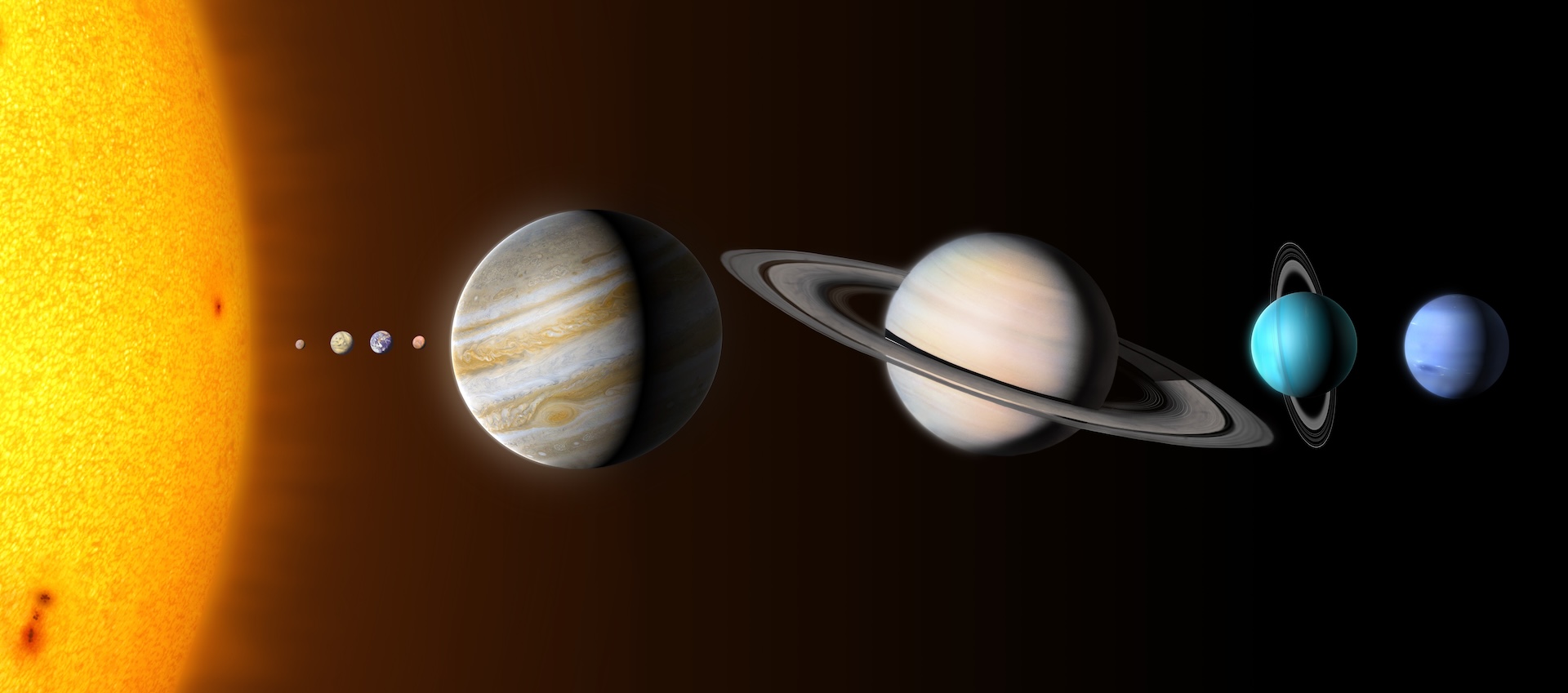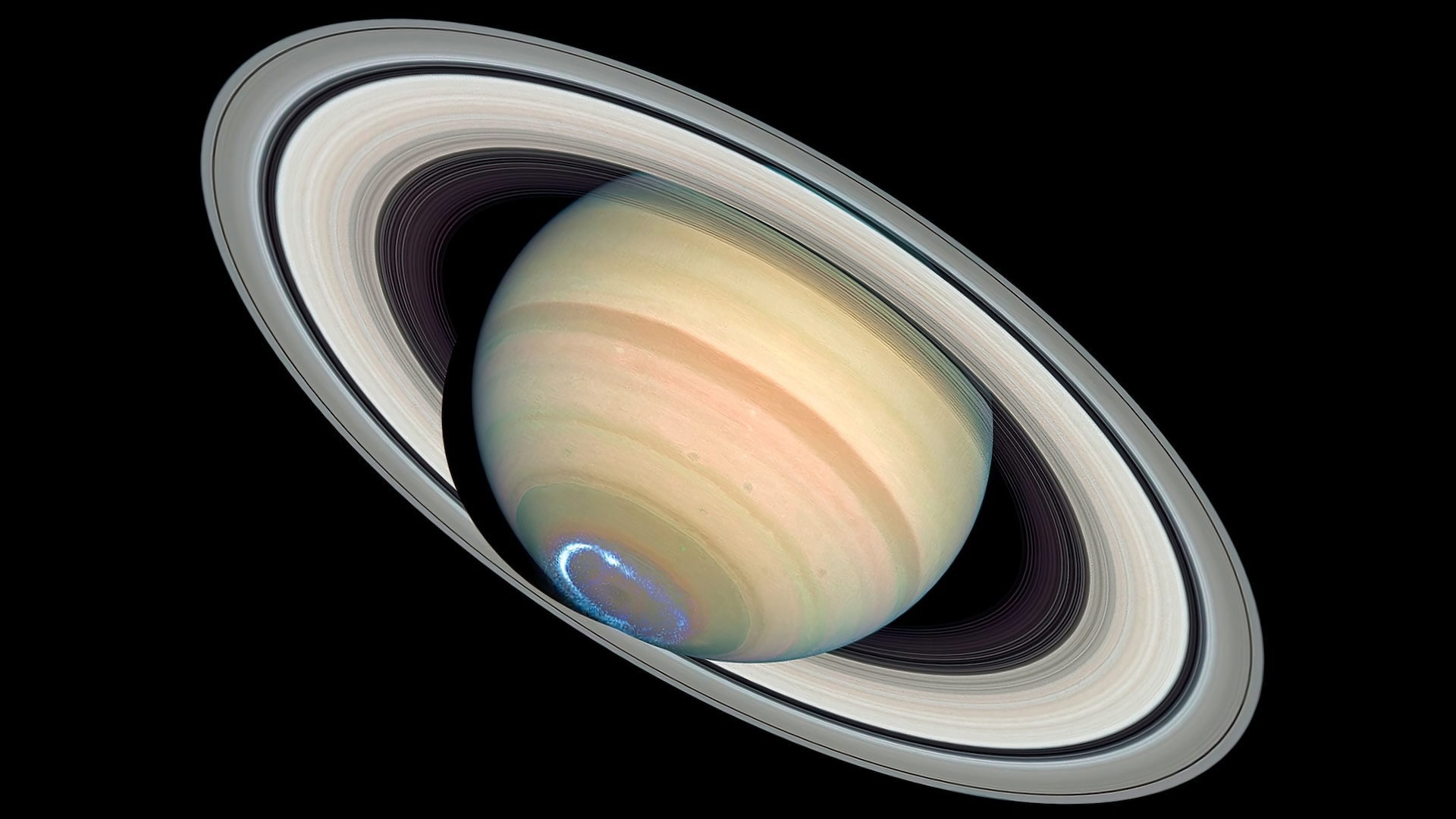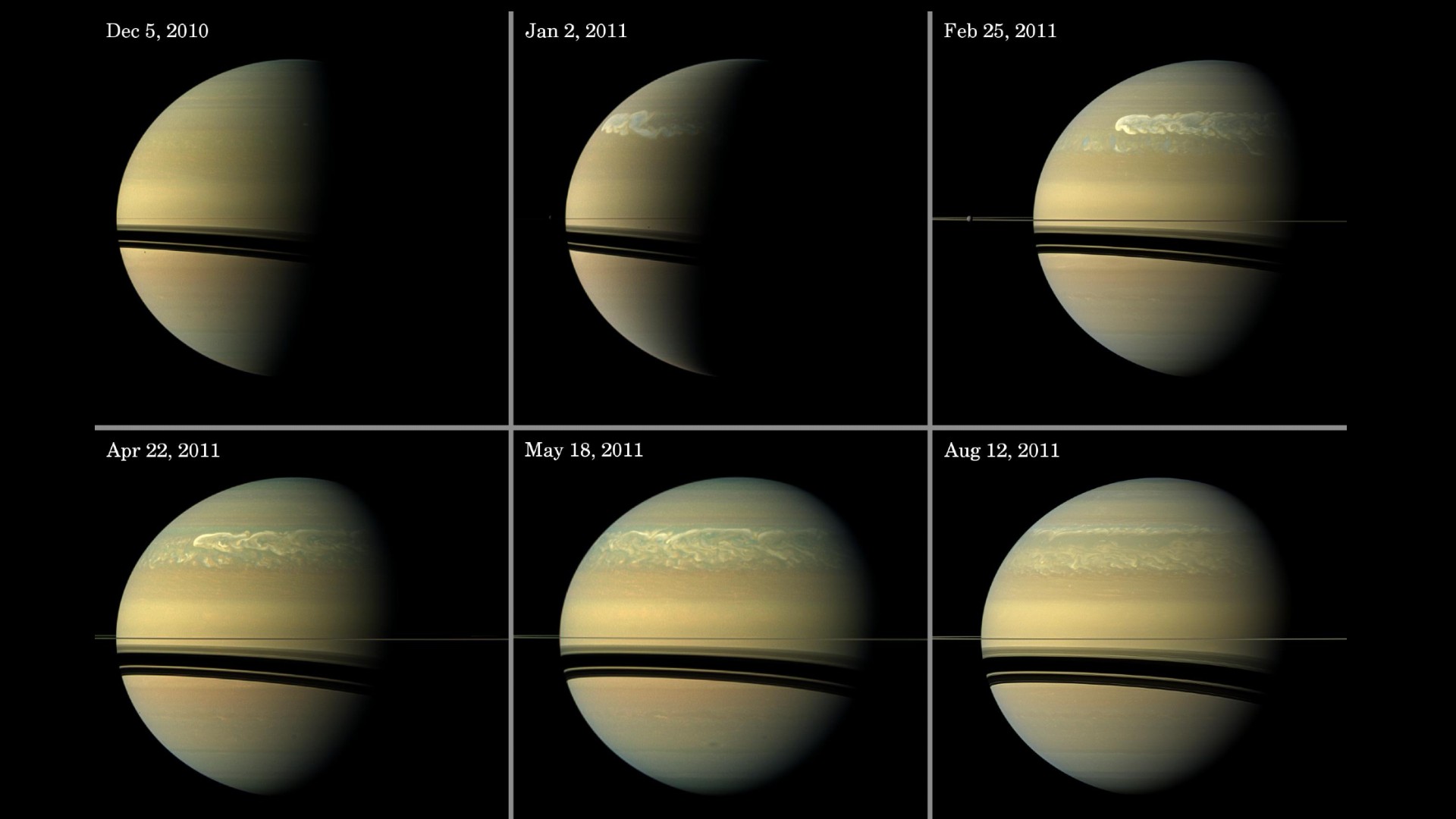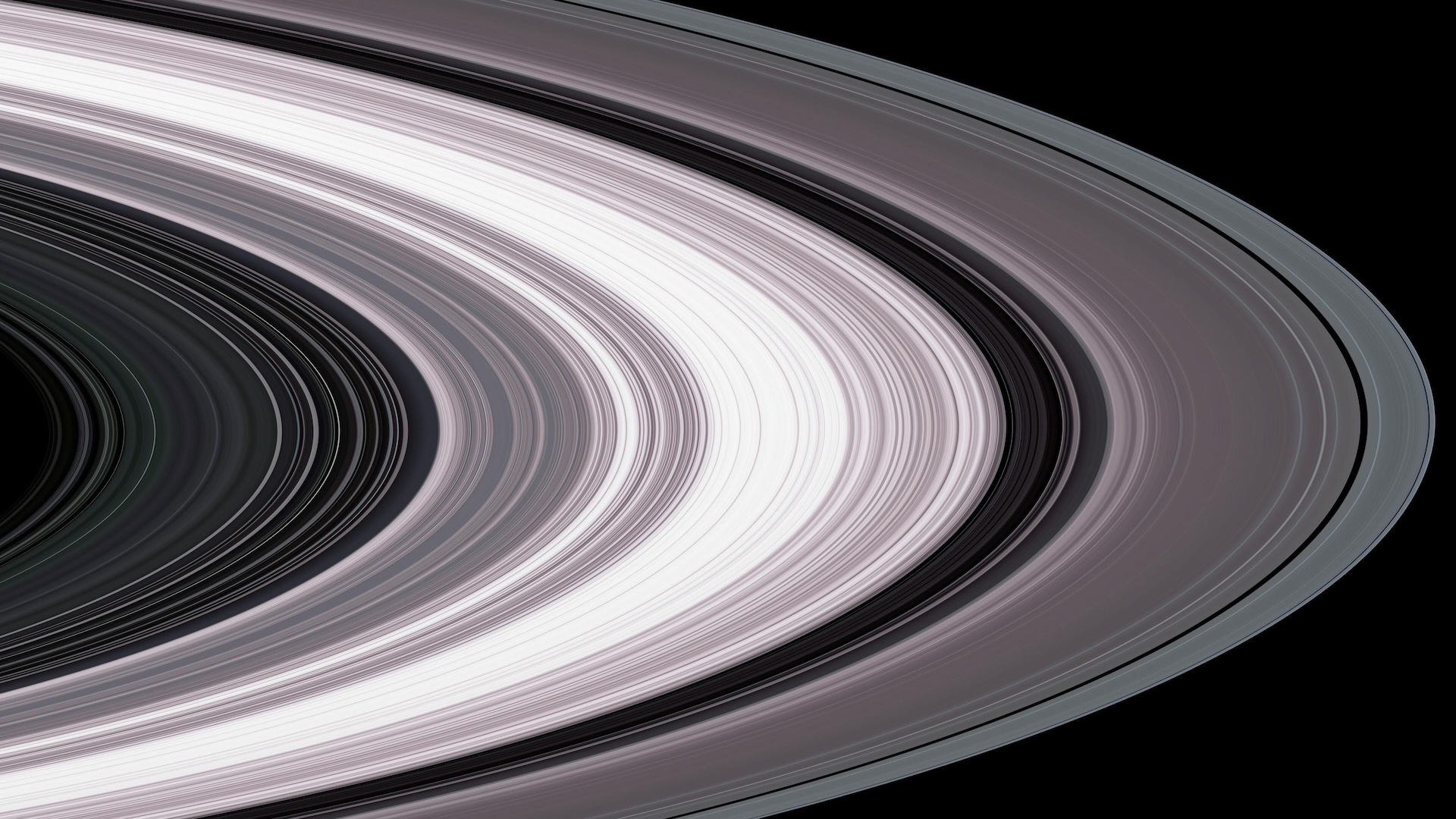QUICK FACTS ABOUT SATURN
How far it is from the sun: 886 million miles (1.4 billion kilometers), on average
How big it is: 72,400 miles (116,500 km) across, or almost 10 times the size of Earth.
How many moons it has: At least 274 known moons, with more likely to be discovered
With its beautiful rings, Saturn may be the most stunning planet in the solar system. It is the sixth planet from the sun and the second-largest planet in the solar system, after Jupiter.
Though Saturn is famous for its rings, all of the other giant planets — including Jupiter, Uranus and Neptune — have ring systems. But Saturn stands out for having beautiful yellow and gold bands across its surface, as well as for hosting more moons than any other planet in the solar system. In fact, some of Saturn’s moons are among the best places to search for life outside Earth.
5 fast facts about Saturn
- Saturn is the farthest planet from Earth that is still visible with the naked eye in the night sky.
- The name “Saturn” comes from the Roman god of wealth and agriculture.
- A day on Saturn lasts 10.7 hours, but a year on Saturn lasts 29.4 Earth years.
- It takes 80 minutes for sunlight to travel to Saturn.
- Saturn is less dense than water, so it could float in a (very large) bathtub.
Everything you need to know about Saturn
Why does Saturn have rings?
Saturn’s beautiful rings are made of icy bits of rock and dust. Scientists think the rings formed when asteroids, comets and pieces of moons shattered into bits under the force of Saturn’s gravity. Pieces of the rings range in size from tiny particles of dust to huge, mountain-size rocks.
Saturn’s rings extend up to 175,000 miles (282,000 km) from the planet. However, they are very thin: The main rings have a height of only 30 feet (10 m), on average, according to NASA. The rings are named for the order in which they were discovered. The main rings are the A, B and C rings, while the D, E, F and G rings are fainter and were discovered more recently.
Very far out, there is a faint ring in the orbit of Saturn’s moon Phoebe. Material is always falling from the rings toward Saturn in a steady “ring rain.” This means Saturn’s stunning rings will probably disappear in as little as 100 million years.

What is Saturn made of?
Saturn’s outermost layers are made from swirling gases — mostly hydrogen and helium. The surface of Saturn also holds small amounts of water, ammonia and methane gas, but these gases become liquid as pressures and temperatures rise deeper in the planet. Saturn is the least-dense planet in the solar system, with an average density less than that of water, meaning it would float in a gigantic bathtub.
Saturn has a dense core made of metals such as iron and nickel. This core is surrounded by rocky material. The next layer contains liquid metallic hydrogen. Research suggests Saturn’s core isn’t a solid sphere like Earth’s. Rather, it is a “fuzzy soup” made of rocks, ice and metallic fluids that slosh around and affect the planet’s gravitational pull, which then influences the structure of its gigantic rings.
Saturn’s atmosphere is made of 96% hydrogen and 4% helium, with small amounts of water, methane and ammonia.Saturn’s winds are far stronger than those made by hurricanes on Earth, reaching an astounding 1,090 mph (1,755 km/h) around the upper atmosphere in the middle of the planet. Saturn’s clouds come in different shades of brown, yellow and gray, and they form a mysterious and strange hexagon-shaped storm system at the north pole. Bolts of lightning thought to be 10,000 times more powerful than those on Earth can be seen on Saturn, too.

Have humans explored Saturn?
Four robotic probes have visited Saturn. The Pioneer 11 spacecraft launched from Earth on April 5, 1973, and completed a flyby of the ringed giant on Sept. 1, 1979.
NASA’s Voyager 1 flew past Saturn in 1980 and, along with Voyager 2, which reached the planet in 1981, snapped nearly 16,000 images of Saturn, its rings and its moons. The two probes discovered three new moons, studied the ring system in detail, and collected data about the planet’s magnetic field and atmosphere.
The most in-depth study of Saturn was done by the Cassini-Huygens mission, which launched from Earth in 1997 and reached the ringed gas giant in 2004. The Huygens probe landed on Saturn’s moon Titan in 2005, becoming the first robot to reach the surface of a moon in the outer solar system. It took amazing photos of seas, river channels and mountains as it landed. Cassini stayed in orbit around Saturn until Sept. 15, 2017, making a total of 294 orbits before falling into the planet’s atmosphere and breaking apart. (Scientists planned this crash on purpose.)
How many moons does Saturn have?
Saturn has more known moons than any other planet. With 274 confirmed moons, it has more than all of the other planets combined. Its largest moon, Titan, is the second-biggest moon in the solar system, after Jupiter’s Ganymede. It’s also larger than the planet Mercury.
Titan is an incredible world wrapped in a dense atmosphere of nitrogen and hydrocarbons. This sludge forms a yellowish haze that’s frigid — minus 290 degrees Fahrenheit (minus 180 degrees Celsius). Below that atmosphere are incredible natural features, such as lakes, seas and rivers of methane and ethane.
The largest sea on Titan is called Kraken Mare. At more than 1,000 feet (300 meters) deep, it is about as deep as New York City’s Chrysler Building is tall. Kraken Mare is so deep that Cassini’s radar was unable to probe all the way to the bottom. The moon’s seas appear to be strangely calm, with waves less than one inch high.
Could there be life on Saturn?
Because of Saturn’s extreme temperatures, pressures and wind speeds, scientists think the chances for life on the planet are slim. But some of the planet’s many moons may be fit for life, and they are major targets for exploration.
With its thick atmosphere and bodies of liquid on its surface, Titan is one of the best places in the solar system to look for alien life. A hidden sea of liquid water might sit below Titan’s icy crust, and NASA has planned the Dragonfly mission to launch in 2028 and explore the moon in more detail.
Another intriguing Saturn moon is Enceladus. It is surrounded by a frozen ice shell, and it has tall geysers of liquid water that shoot out at 800 mph (1,290 km/h). Though Enceladus is tiny — just 313 miles (504 km) across — Cassini spotted methane coming from cracks known as tiger stripes near the moon’s south pole. This is a possible hint that there may be life in the underground ocean, but the methane could also be coming from other chemical processes.
Saturn’s other moons hold surprises. For instance, Mimas — a little world with a big crater that makes it looks like the Death Star from “Star Wars” — might also have a body of liquid water trapped beneath its outer ice.
Saturn pictures
Discover more about Saturn
—What are Saturn’s rings made of?
—There’s a weird, disappearing dark spot on Saturn’s moon Enceladus
—100-year-long ‘megastorms’ on Saturn are creating radio signals that scientists can’t fully explain





